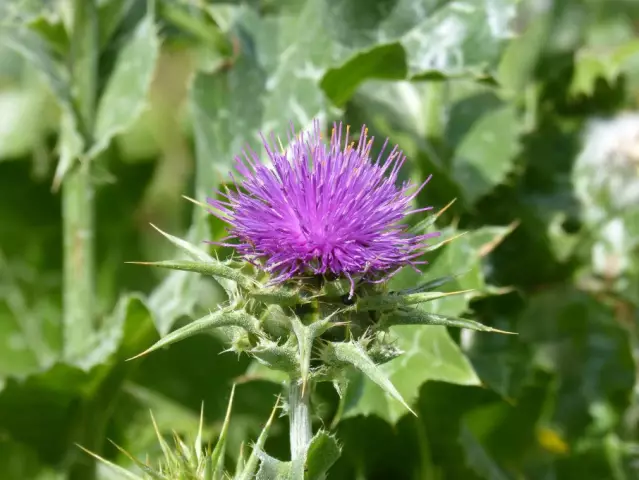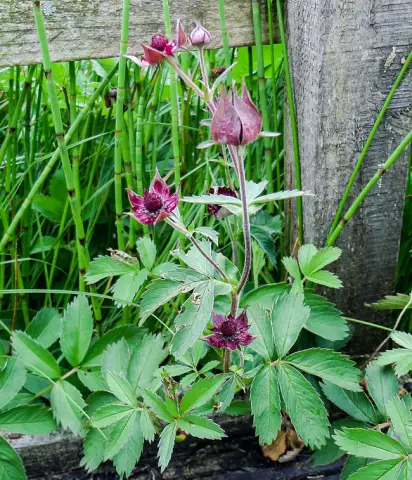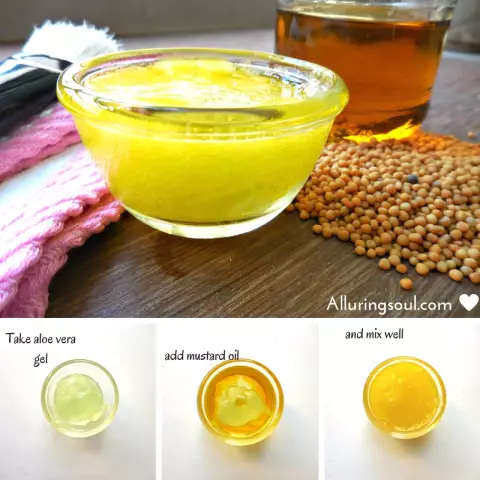- Author Rachel Wainwright [email protected].
- Public 2023-12-15 07:39.
- Last modified 2025-11-02 20:14.
Articaine
Articaine: instructions for use and reviews
- 1. Release form and composition
- 2. Pharmacological properties
- 3. Indications for use
- 4. Contraindications
- 5. Method of application and dosage
- 6. Side effects
- 7. Overdose
- 8. Special instructions
- 9. Application during pregnancy and lactation
- 10. Use in childhood
- 11. Drug interactions
- 12. Analogs
- 13. Terms and conditions of storage
- 14. Terms of dispensing from pharmacies
- 15. Reviews
- 16. Price in pharmacies
Latin name: Articaine
ATX code: N01BB08
Active ingredient: articaine (articaine)
Producer: Biochemist, JSC (Russia), Armavir biofactory FKP (Russia)
Description and photo updated: 2019-27-08
Prices in pharmacies: from 557 rubles.
Buy

Articaine is an anesthetic for local infiltration and local anesthesia with a pronounced analgesic effect.
Release form and composition
Dosage form - solution for injection: transparent liquid with a yellow tint or without color (1.7 ml each in cartridges: 10 pieces in a contour plastic package, in a cardboard box 1, 5 or 10 packages; 10 pieces in a contour cell packaging, in a cardboard box 1, 5 or 10 packs; 10 pcs. in a cardboard insert, in a cardboard box 1, 5 or 10 inserts; 1 ml or 2 ml in glass ampoules: 5 pcs. in a plastic contour package, in cardboard box 1, 2 packs or in a cardboard box 20 or 50 packs; 5 pcs. in a blister strip, in a cardboard pack 1 or 2 packs, in a cardboard box 20 or 50 packs; each pack also contains instructions for the use of Articaine) …
The active ingredient is articaine hydrochloride, in 1 ml of solution - 40 mg.
Auxiliary components in Articaine: sodium chloride, water for injection.
Pharmacological properties
Pharmacodynamics
Articaine is a local anesthetic for infiltration and conduction anesthesia intended for use in dental practice. It is a thiophene derivative with a pronounced local anesthetic effect.
In a slightly alkaline environment, articaine undergoes hydrolysis and releases the base, which has lipophilic properties and easily penetrates into the nerve fiber through the membrane.
The mechanism of anesthetic action is explained by the interaction of the substance with receptors and blocking of sodium channels in the membrane of the nerve fiber.
After administration, the effect of the drug develops rapidly (latency - from 1 to 3 minutes) and lasts for 20 minutes.
Articaine is rapidly degraded to an inactive metabolite of articainic acid, therefore it is characterized by very low toxicity, due to which repeated administration of the drug is possible.
The effect of articaine is reduced in an acidic environment.
Pharmacokinetics
Articaine is metabolized in liver microsomes. In addition, it is inactivated by nonspecific plasma enzymes in the blood and tissues by hydrolysis in the carboxyl group. Hydrolysis begins immediately after administration of the drug and occurs very quickly, therefore, about 90% of the administered dose is inactivated by this method. As a result, the main metabolite is formed - articainic acid, which does not possess local anesthetic activity and systemic toxicity.
About 95% of the drug binds to plasma proteins. Penetrates the placental barrier. In a small amount, it penetrates the blood-brain barrier and is excreted in breast milk.
It is excreted mainly (54-63%) by the kidneys. The half-life after injection of Articaine into the submucosa of the oral cavity is about 25 minutes.
Indications for use
The use of Articaine is indicated for local anesthesia in dental practice.
Contraindications
- pathology of the central nervous system;
- bronchial asthma;
- megaloblastic B12-deficiency anemia;
- arterial hypotension;
- paroxysmal tachycardia;
- severe pathologies of cardiac conduction (including severe bradycardia, atrioventricular block II and III degrees);
- atrial fibrillation;
- acute heart failure;
- angle-closure glaucoma;
- chronic hypoxia;
- age up to 4 years;
- extensive maxillofacial surgery, dental surgery lasting more than 20 minutes;
- hypersensitivity to local anesthetics of the amide group or components of Articaine.
It is recommended to use with caution in women in labor with bleeding in the third trimester of pregnancy, preeclampsia.
Articaine, instructions for use: method and dosage
It is necessary to inject the drug after a preliminary aspiration test, this will prevent intravascular injection of the drug!
The solution is used as an injection into the oral cavity requiring pain relief.
During the introduction, the pressure on the syringe plunger should be adjusted taking into account the sensitivity of the tissues.
It is not recommended to inject Articaine into areas with an inflamed mucous surface.
The latency period lasts 1-3 minutes, the effect of anesthesia lasts 20 minutes.
Recommended dosage:
- uncomplicated tooth extraction of the upper jaw in the non-inflamed stage: 1.7 ml per 1 tooth - into the vestibular depot. In the absence of a sufficient anesthetic effect, additional administration of 1-1.7 ml of solution is indicated;
- Palatal incisions and sutures to create a palatal depot: 0.1 ml;
- preparation of cavities, turning teeth for the crown (except for the molars of the lower jaw): 0.5-1.7 ml per 1 tooth in the form of a vestibular injection.
For adult patients, it is recommended to administer a dose not exceeding 4 mg per 1 kg of body weight for one treatment procedure.
Infiltration anesthesia to remove the premolars of the lower jaw (5-5) in an uncomplicated state provides the effect of conduction anesthesia.
You can take food only after full recovery of sensitivity.
Side effects
- nervous system: paresthesia, dizziness, hypesthesia; dose-dependent effects - respiratory disorders (with the risk of progression up to respiratory arrest), stupor, loss of consciousness, muscle tremor, muscle twitching, sometimes generalized convulsions; if the injection technique is violated, nerve damage and the development of facial nerve paralysis;
- cardiovascular system: lowering blood pressure, heart failure, shock;
- organ of vision: visual disorders of a transient nature - double vision, blurred perception, blindness;
- immune system: allergic reactions in the form of skin hyperemia, rhinitis, conjunctivitis, angioedema (urticaria, swelling of the lips, cheeks, edema of the vocal cords with shortness of breath); at the injection site - inflammation or swelling of the mucous membrane; anaphylactic shock;
- digestive system: nausea, vomiting.
The use of the drug is well tolerated by patients; the development of these side effects is not widespread.
Overdose
An overdose of articaine is manifested by dizziness, decreased blood pressure, bradycardia, motor agitation or stupor during administration, loss of consciousness.
In the event of the first signs of an overdose, you should immediately stop the administration of the drug, lay the patient down, provide him with free airway, control blood pressure and the number of heart contractions.
Therapeutic measures:
- apnea, dyspnea: oxygen supply, endotracheal intubation, artificial lung ventilation (the use of central analeptics is contraindicated);
- convulsions: slow intravenous administration of short-acting barbiturates and simultaneous supply of oxygen, hemodynamic control;
- severe circulatory disorders, shock: intravenous administration of electrolytes, albumin, plasma substitutes, glucocorticosteroids;
- severe tachycardia and tachyarrhythmia: intravenous administration of beta-blockers;
- collapse, increasing bradycardia: first, slow intravenous injection of epinephrine (adrenaline) at a dose of 0.1 mg, then intravenous drip, control of blood pressure and heart rate.
In all cases, oxygen supply and circulation control are required.
special instructions
Do not use Articaine intravenously!
Anesthesia should be carried out with strict adherence to the rules of asepsis and antiseptics, this will avoid the spread of infections, including hepatitis. For each injection, you must use a new cartridge or ampoule, the rest of the drug should be disposed of.
To anesthetize the soft palate and tongue, the use of conductive anesthesia is required, since infiltration mandibular anesthesia is ineffective.
The introduction of local anesthetics must be accompanied by monitoring the function of the respiratory, cardiovascular and central nervous systems.
Patients taking monoamine oxidase inhibitors (MAOs) should stop taking them 10 days before the upcoming dental surgery with local anesthetic injection.
Influence on the ability to drive vehicles and complex mechanisms
Due to the possible effect of the drug on reducing the speed of psychomotor reactions and concentration of attention, during the period of treatment, patients are recommended to drive vehicles and mechanisms with caution.
Application during pregnancy and lactation
There are insufficient clinical data to assess the safety of Articaine use during pregnancy. It has been found that the drug crosses the placental barrier. In this regard, the decision to use an anesthetic can only be made by a doctor if, in his opinion, the expected benefits are higher than the potential risks.
Articaine can be used during lactation, since it passes into breast milk in quantities that have no clinical significance.
Pediatric use
The drug is not recommended for use in the treatment of children under 4 years of age, since the efficacy and safety of articaine has not been established in patients of this age.
Drug interactions
Against the background of the simultaneous administration of Articaine:
- muscle relaxants - enhance and lengthen their effect;
- warfarin, ardeparin sodium, heparin, dalteparin sodium, enoxaparin sodium, danaparoid sodium (anticoagulants) - increase the risk of bleeding and hemorrhage;
- narcotic analgesics - cause the development of an additive effect, increasing respiratory depression;
- procarbazine, furazolidone, selegiline (MAO inhibitors) - contribute to the development of arterial hypotension;
- vasoconstrictor drugs - enhance and prolong the local anesthetic effect of articaine;
- disinfectant solutions containing heavy metals - increase painful sensitivity and the risk of developing edema at the injection site;
- cyclophosphamide, cholinesterase inhibitors (demecaria bromide, anti-myasthenic drugs, ecothiopathic chloride), thiotepa - slow down the metabolism of articaine.
The drug enhances the clinical effect of drugs that have a depressing effect on the central nervous system.
It should be borne in mind that the combination with anti-myasthenic drugs causes an antagonism of the effect on skeletal muscles, especially when high doses of Articaine are administered, therefore, additional correction of the treatment of myasthenia gravis is required.
Para-aminobenzoic acid, which is a metabolite of procaine, counteracts the effect of antimicrobial sulfa drugs.
Analogs
Articaine analogs are: Articaine DF, Articaine Perrel with adrenaline, Articaine-EGEN with adrenaline, Brilocaine-adrenaline, Brilocaine-adrenaline Forte, Mepivacaine DF, Mepivastezin, Primacaine with adrenaline, Septanest with adrenaline, Skandinicaine D.
Terms and conditions of storage
Keep out of the reach of children.
Store in a dark place at temperatures up to 25 ° C, do not freeze.
The shelf life is 3 years.
Terms of dispensing from pharmacies
Dispensed by prescription.
Reviews about Articaine
On specialized medical sites and forums, reviews about Articaine are left mainly by dentists who use the drug in their practice. They speak positively about the anesthetic because it has a quick effect and is well tolerated. However, doctors note that Articaine has contraindications, so the patient must be informed about all acute and chronic diseases that he has.
Price for Articaine in pharmacies
Depending on the pharmacy chain, the price for Artikain can be approximately from 643 to 856 rubles. for a pack of 10 ampoules of 2 ml.
Articaine: prices in online pharmacies
|
Drug name Price Pharmacy |
|
Articaine 20 mg / ml solution for injection 2 ml 10 pcs. 557 r Buy |
|
Articaine with adrenaline 20mg + 0.005mg / ml injection 2 ml 10 pcs. 557 r Buy |
|
Articaine with adrenaline forte solution for in. 40mg + 0.01mg / ml 2ml 10 pcs. 645 RUB Buy |
|
Articaine with adrenaline forte 40 mg + 0.01 mg / ml injection 2 ml 10 pcs. 645 RUB Buy |
|
Articaine with adrenaline solution for in. 40mg + 0.005mg / ml 2ml 10 pcs. 995 RUB Buy |
|
Articaine with adrenaline 40 mg + 0.005 mg / ml injection 2 ml 10 pcs. 995 RUB Buy |
|
Articaine with adrenaline 40 mg + 0.005 mg / ml injection 1.7 ml 50 pcs. RUB 1705 Buy |

Anna Kozlova Medical journalist About the author
Education: Rostov State Medical University, specialty "General Medicine".
Information about the drug is generalized, provided for informational purposes only and does not replace the official instructions. Self-medication is hazardous to health!






